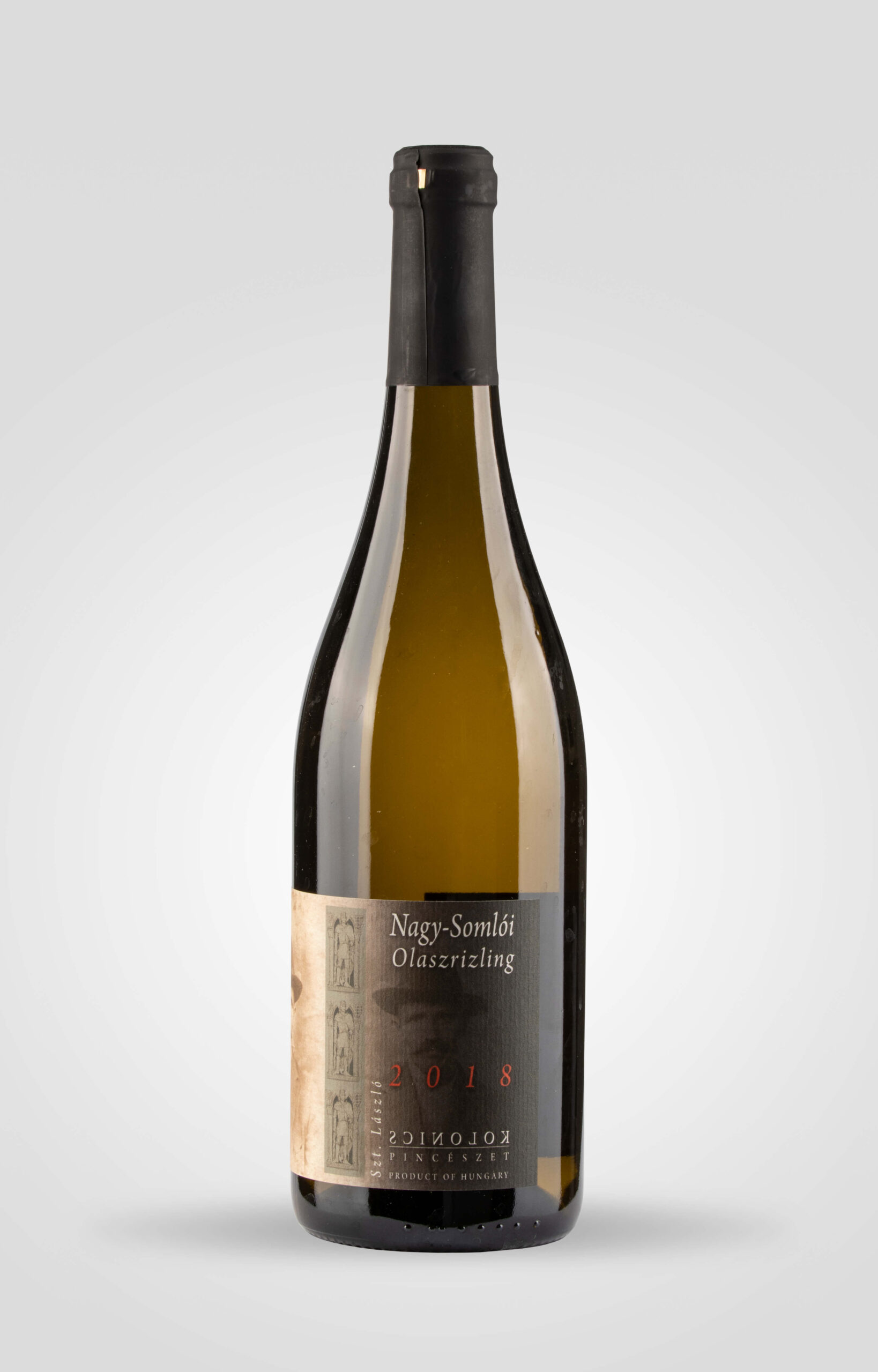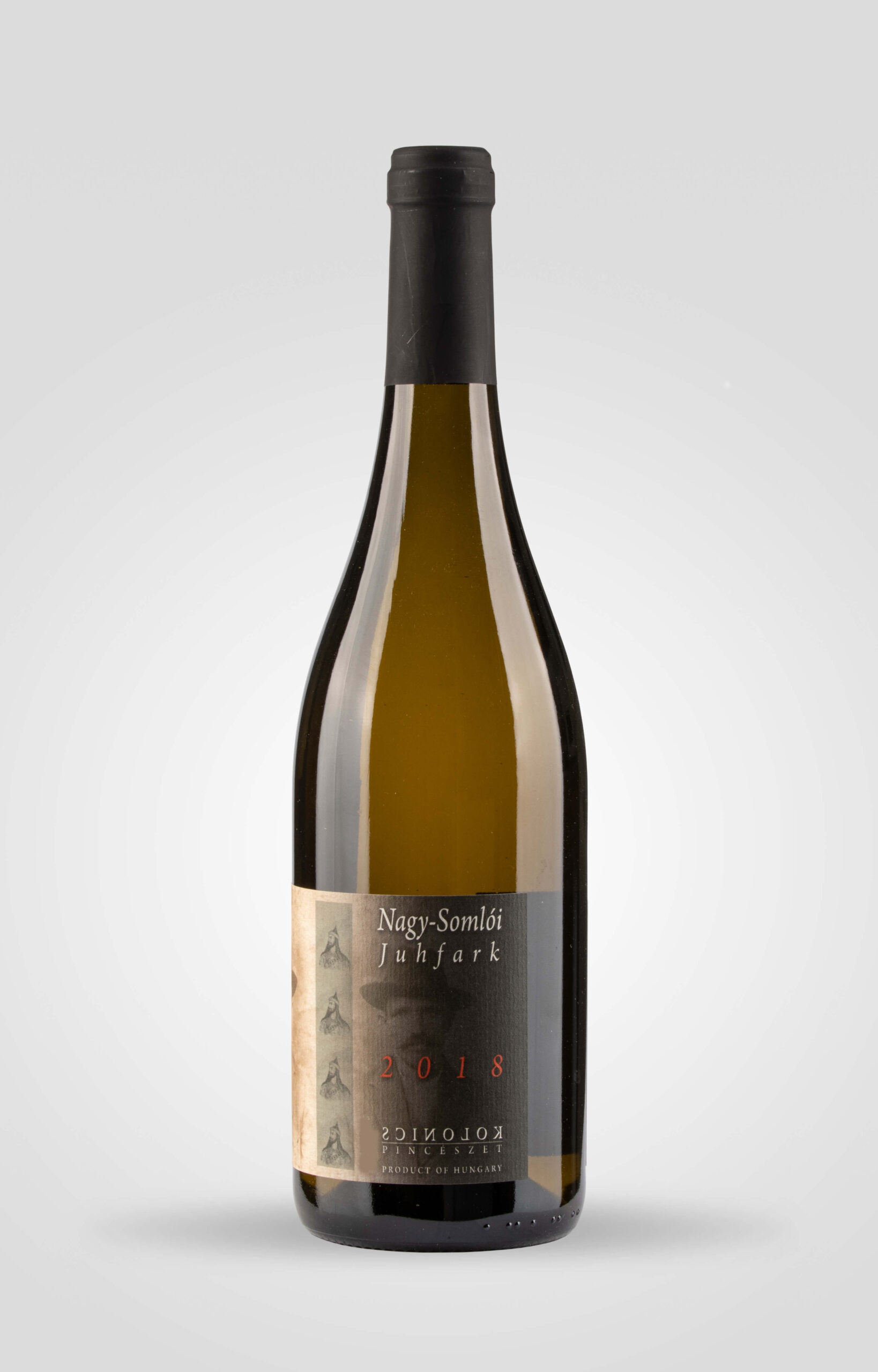Kolonics Winery
Somló Region
Károly Kolonics’s family goes back several generations in the Somló area. He has a reverence to this terroir, which is evident in his textbook Somló style wines. They are rich, full-bodied, and waxy, perfectly reflecting Somló’s volcanic terroir with minerality, saltiness, and concentrated flavors. Kolonics grows Olaszrizling, Furmint, Juhfark, and Hárslevelű on 9 hectares of mostly in thick basalt crumble soil vineyards. He is a traditional winemaker, and typically ferments his wines in oak, and then ages them for one to three years before bottling. He is serious about his unique aging methods. His wines are all named for the barrels in which they mature, so he can produce multiple versions of single varietal wines from the same vintage, each aged in a different oak or acacia barrel, resulting in different styles. A photograph of his great-grandfather, who emigrated to America before World War One, appears on all of his labels.

Olaszrizling “St. László,” 2018
Károly Kolonics, the winemaker/owner of the Kolonics Winery names his barrels, and bottles the wines accordingly. “St. László” is the name of the barrel in which this wine was aged. It’s hard for us to keep up with all of the barrel-named wines that Kolonics produces, but this is exactly why we love his wines! They are truly unique. Kolonics can produce up to six different Olaszrizlings from the same vintage, each aged in a different style. He always produces the wines in a certain way—with six to 12 hours of skin contact before pressing, using only indigenous yeast, and a long oak aging. He uses mostly big barrels (1,000 or 1,500 liters) that are quite old, usually 10 to 20 years old. This Olaszrizling was aged in the St. Laszló—a 1,500-liter, steam-bent oak cask—for a year. The grapes are from the Ápátság vineyard, one of Somló’s premier vineyards, which has a perfect southern exposure. Kolonics’ wines are the perfect example of Somló’s volcanic terroir. Showing the region’s typical strong flavors, his wines are mineral, salty, intense, concentrated, rich, and tropical. Textbook Somló style. This Olaszrizling has aromas of dried sage, lavender, toast, and flint. On the palate, it is rich, intense, and ripe, with a distinct volcanic minerality. We are big fans of this new face of Olaszrizling. Enjoy it next to grilled vegetables, creamy pastas, and smoked meats.

Juhfark “Nimród,” 2018
With just 507 hectares, Somló is Hungary’s second smallest wine region. But it produces, arguably, Hungary’s strongest terroir-driven wines. The region basically consists of a single hill, an extinct volcano. Millions of years ago, when the Pannonian sea covered today’s Hungary, Somló was an under-water volcano. The volcanic basalt soil remained, to the benefit of winemakers. The Juhfark grape variety is believed to have originated on the Somló hill, and has become the iconic variety-of-choice for local winemakers. Juhfark is a tricky variety everywhere else because it lacks personality and flavor. But in Somló, it reflects the volcanic flavors of the place. It’s the perfect mirror-grape, showing exactly what the region is about. It’s name—Juh means sheep and fark means tail—comes from the sheep tail shape of the grape cluster. 2018 was an “almost-perfect year,” according to Károly Kolonics. “It was all going perfectly well until the first week of September, when strong rain came. Those who harvested before the rains could produce great wines.” This Juhfark comes from the southeastern facing Gyűr vineyard. It was aged in the “Nimród” barrel, a 1,060 liter new Hungarian oak barrel. The wine has aromas of mint, ripe white peaches, and white flowers. It is fresh, long, mineral, and extraordinary. The salty minerality and the intensity of the flavors are a classic Somló touch. Enjoy it next to grilled fish or duck, sushi, or Thai cuisine.
SOLD OUT
